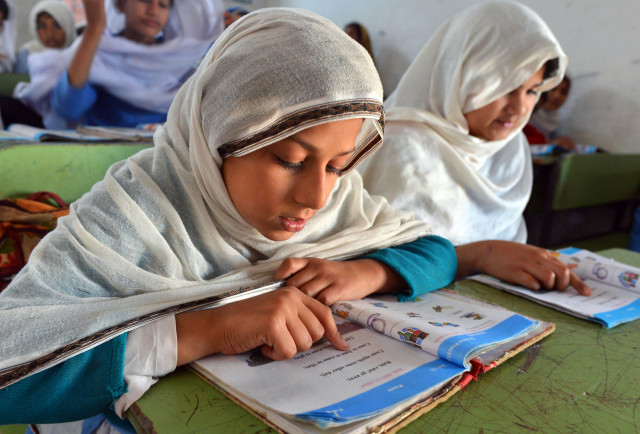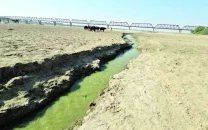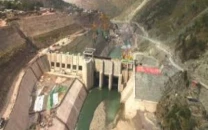2013-14 report: Literacy rate slips nationwide by 2%
Survey finds Sindh, Balochistan as performance laggards; Punjab, K-P move a couple of notches up

Survey finds Sindh, Balochistan as performance laggards; Punjab, K-P move a couple of notches up. PHOTO: PAKISTANTODAY
The overall literacy rate, estimated at 60% in 2012-13, has gone down to 58% in 2013-14, shows the results of Pakistan Social and Living Standards Measurement Survey (PSLM). Pakistan Bureau of Statistics (PBS) carried out the survey from August 2013 to June 2014. The report provides information on key social indicators at national and provincial levels with urban and rural breakdown.
The four provincial and federal governments spent Rs537.6 billion or 2.1% of gross domestic product (GDP) in 2013-14, highlighting the urgency to double the spending to address the root causes that keep children away from schools.
The survey results also suggest that number of children going to primary schools has also dropped. The findings show that parents refusal to send their children to schools was the single biggest reason for children not going to schools, keeping four out of 10 children out of schools. Two out of every 10 children also did not go to the schools, terming the education too expensive.

Under the United Nations Millennium Development Goals (MDGs) Pakistan was required to increase its literacy rate to 88% by 2015. According to the official definition, the literacy rate is that percentage of the population 10 years and above which is able to read and write in any language.
There was also deterioration in availability of basic health facilities while the proportion of population having access to water also dropped. Only 55% of the population had access to sustained water sources – down from 57% in a year. The country has missed the MDG goal of increasing this ratio to 93%.
When compared with 2011-12, the last surveyed year, the literacy rate in 2013-14 remained stagnant at 58%. The male and female literacy rates also stood still at 70% and 47%, respectively.
According to the report, the devastating floods in 2010, which severely affected the infrastructure of schools was the major reason behind drop in literacy rate in 2014 – an argument that seemingly does not hold water. It also says that shortage of schools, teachers, student absenteeism and lack of interest at the level of parents, students and teachers – particularly in rural areas – were the other reasons behind increasing illiteracy in the country.
The provincial literacy rates show that Punjab and Khyber-Pakhtunkhwa (K-P) governments managed to improve literacy ratios while Sindh and Balochistan could not maintain their previous levels.
Punjab turned out to be the most educated province, followed by Sindh, K-P and Balochistan. In Punjab 61% population was able to read and write – 1% up from 2011-12 level. Punjab spent Rs218 billion on education in 2013-14.
In Sindh the percentage of educated people dropped by 4% to 56% in 2013-14 and the provincial government spending on education stood at Rs106 billion. The declining ratio was witnessed across both genders. In K-P, the literacy rate increased to 53% due to increase in female literacy rate, a progress of 1%. Yet two-thirds of females were illiterate in K-P. The provincial government spent Rs89 billion on education.
In Balochistan, the literacy rate dropped by 3% to 43% in 2013-14, due to decline in male literacy rate, according to the report. Three-fourth of Balochistan women were illiterate while the illiteracy level of male was 45%. The provincial government spent Rs36 billion on education.
Published in The Express Tribune, May 14th, 2015.

















COMMENTS
Comments are moderated and generally will be posted if they are on-topic and not abusive.
For more information, please see our Comments FAQ